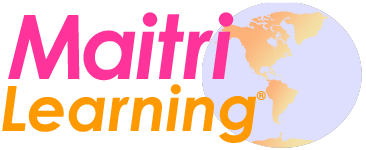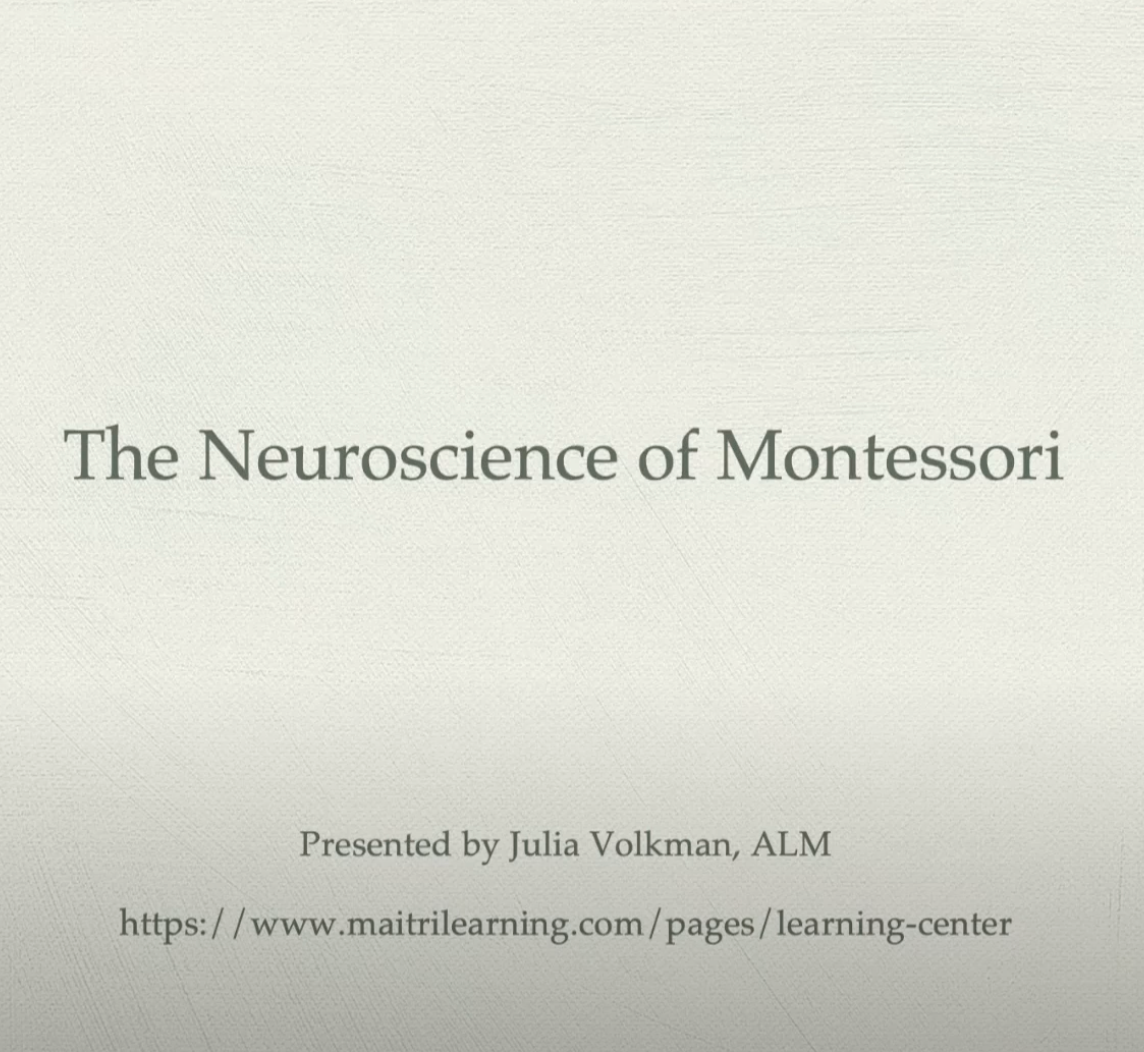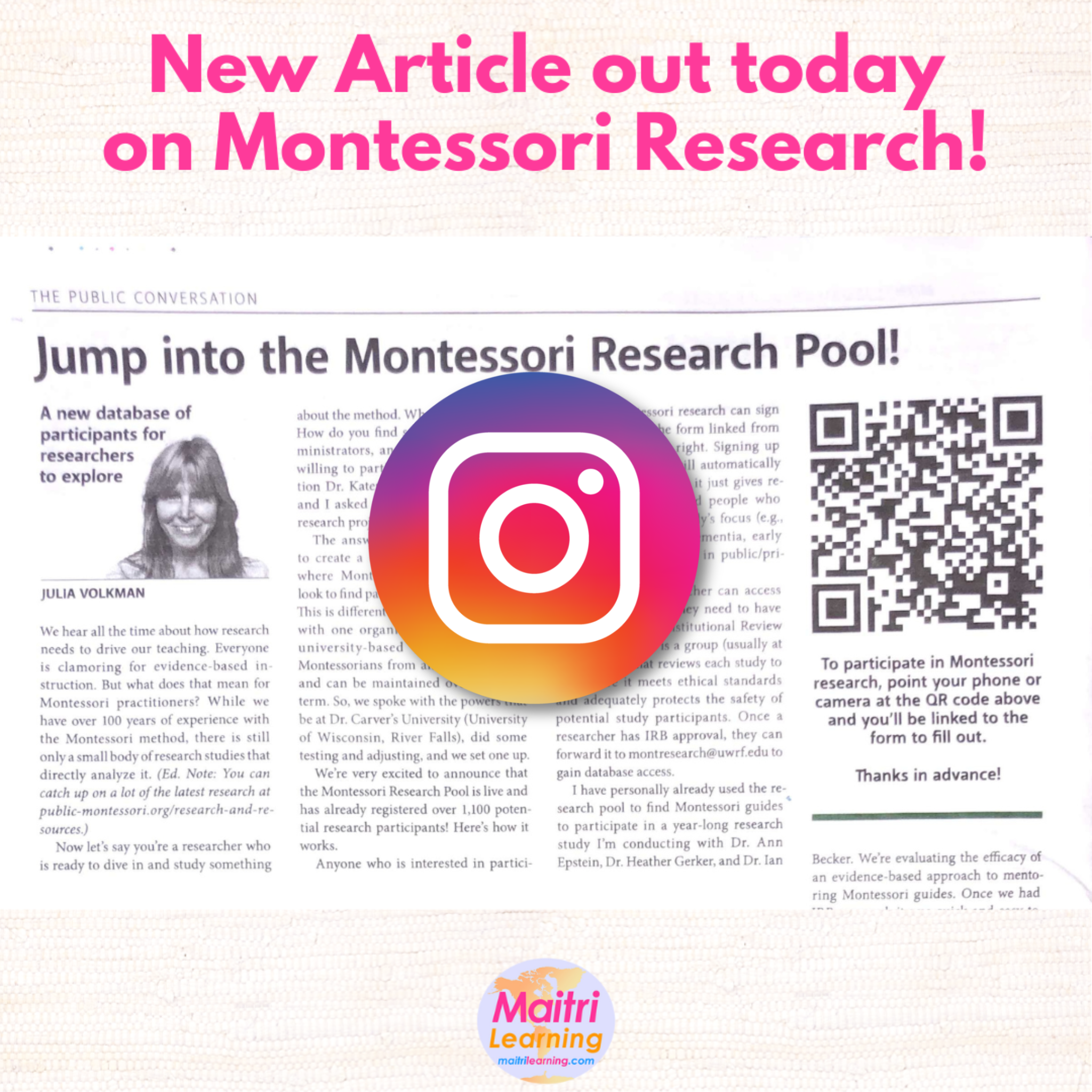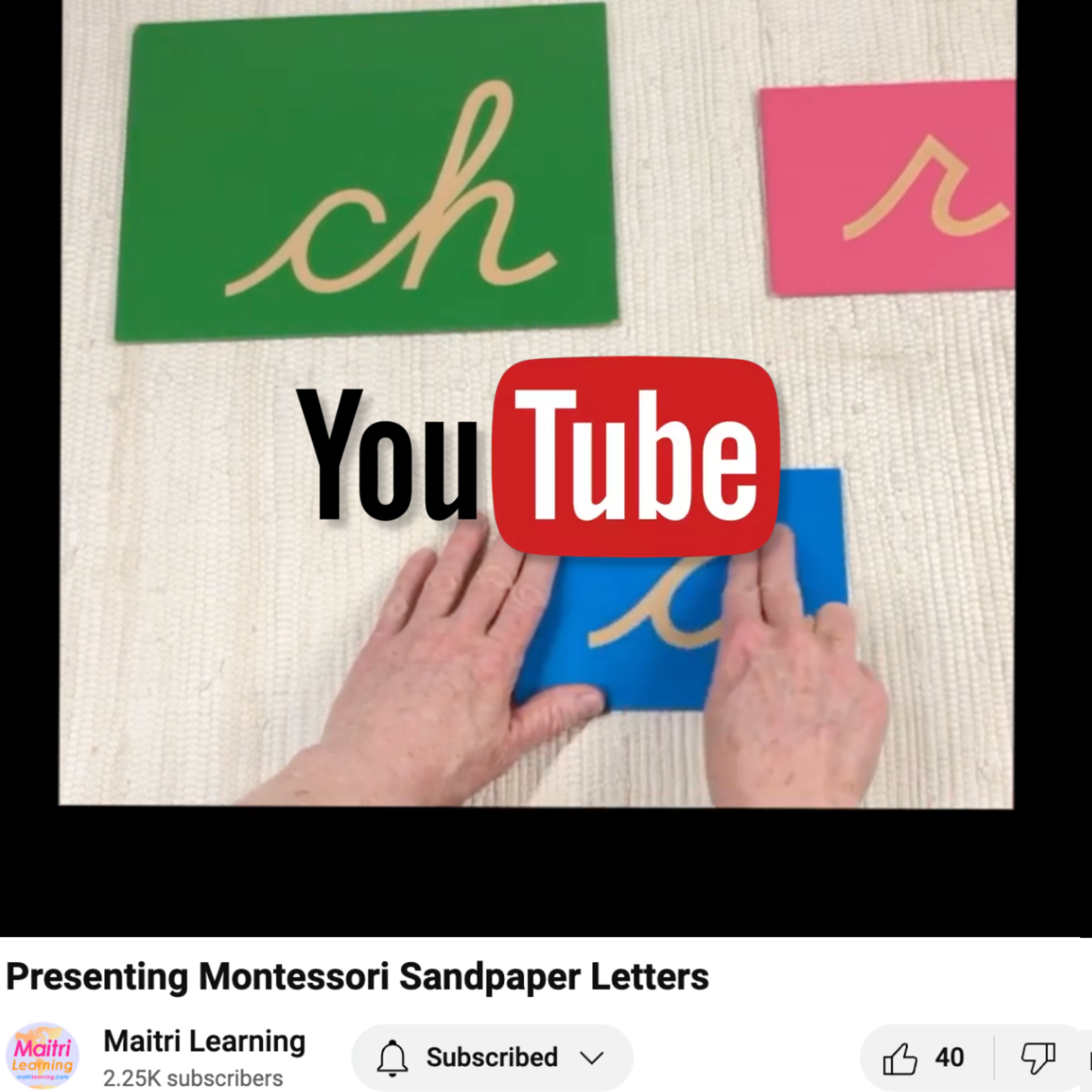Handwriting in the Montessori Early Childhood Classroom

In Dr. Montessori’s writings, she speaks of an “explosion” into writing. The children spontaneously discovered that they knew how to write and started writing every word, everywhere. But, she insists that she never taught them how to write, she just prepared them to write, indirectly.
But in many Montessori classrooms, you'll find all kinds of handwriting worksheets and programs that have nothing to do with Dr. Montessori's successful indirect plan. Let me give you a brief overview of this indirect preparation and also a specific description of how we introduce the recording process. May it encourage you to clear off the clutter on your shelves and return to the basics of what Dr. Montessori gave us.
An Organized Mind
The writing process is orderly: The hand must start at a certain place on the page, letters must be placed in sequence, ideas must be put together so that they make sense, etc. Order, logic, natural consequences, and sequence are infused throughout the prepared Montessori learning environment. Practical life activities, in particular, help the child develop their logical mind. If they are too rough with a glass, it will break. If they lose track of what they are doing, they may spill the water in their bucket. Order is a great support to the young child. I could go on at length on this topic but instead I will simply draw your attention to it.

If you are encountering challenges with a child learning handwriting, look to the order within their mind. If it is lacking, draw the child’s attention to the activities of Practical Life. Help them increase their attention span and concentration by scrubbing tables, washing dishes, ironing clothes, preparing food, sewing, etc. When their practical life work becomes organized, you will see the results in all of their efforts across curricular areas.
Spoken Language
All handwriting work begins with spoken language experience. Before the children have something they are interested in writing about, they will have something they are interested in saying. Even if a child can not physically speak (e.g., due to a neurological disorder), they will be thinking about words and thinking via words. It is this motor expression of language (spoken externally or thought internally) that precedes all other language work.
The lessons we offer in spoken language teach the child that they have something worth saying. For example, in Conversations at a Picture, we go together with a child to a piece of art on the wall and guide them in talking about what they see. There is no wrong answer because it is art; their interpretation is inherently valid even if it is rather unexpected.
We also help them appreciate the joy of our language by singing songs and reciting poetry, tongue twisters, sound games, rhymes, etc. Thus, we teach them that language is useful, enjoyable, and meaningful and that they have something worth saying. Once these foundations are set, the logistics of handwriting can follow. For details on spoken language activities, see our other blog posts:
- Montessori sound games: Teaching phonemic awareness
- Natural conversations
- Word webs & reading circuits: Going deep with spoken language lessons
- The motherload of spoken language lessons
- Spoken language Montessori lessons
Letter-Sound Knowledge
Learning the mechanics of creating a letter’s shape as well as its associated sound is the next cornerstone of handwriting. In the Montessori approach, we teach the shape of the letters simultaneously with the sound of the letters via the sandpaper letters. First, we trace a letter, then we say its sound, and then we say a few words that feature that sound. This approach not only develops muscle memory for how to ‘write’ a letter, it also creates meaning for the child. They are tracing the letter ‘m’ because that letter is important; it’s in the word, “mom!”

As an extension of (or remediation with) the sandpaper letters, children may be interested in writing letters on their own using a sand tray or chalkboard. But the focus of this work is on tracing with the fingers and associating that shape with a sound.
Writing with the mind
Before we invite the young child to start writing with their hand, we invite them to start creating words using the movable alphabet. Why? Because children can build words in their minds before they can write them with their hands. Building a code (writing) is easier than cracking one (reading).
This isn’t just a Montessori theory, it is supported by research. In fact, I conducted a research study for my graduate thesis at Harvard on exactly this topic. I studied 78 preschoolers (ages 3 or 4) in traditional public schools and found children are able to spell words phonetically with the movable alphabet more successfully than they can write those same words. If you like research, you can read the full thesis at this link.

Building words with the movable alphabet allows children to work with the letters and sounds they know in order to create the ‘code’ of written language even if their hands cannot accurately reproduce the letters. This experience building words prepares them for both handwriting and reading.
Writing with the hand
Once the foundations of spoken language, letter-sound-knowledge, and intellectual writing are laid, we are ready to turn to handwriting. We indirectly prepare the child’s hand for this work in myriad ways. Here are some of the main ones (but there are more):
- Practical life exercises (to strengthen the hand muscles/coordinate hand & mind)
- Sensorial exercises (e.g., using the pincer grasp to lift the knobbed cylinders)
- Geometry cabinet (tracing the shapes with the fingers)
- Botany cabinet (tracing the shapes with a stick/pencil surrogate)
- Metal inset activities

Unfortunately, many of us gloss over these steps. We may use the geometry and botany cabinets like puzzles rather than as tracing activities (this is the cardinal sin of many classrooms). We may introduce the metal insets too early, before the child has hand strength to be successful with the pencil. Or we may try to "teach" handwriting via marker tracing activities. (Note that paper tracing activities are an option ONLY as remedial work; they are not the preferred first approach that works for most children.)
Again, this entire approach to handwriting is based on laying the proper foundations; indirect preparation. We incrementally increase the challenge to the hand/mind so that it is never too easy nor too difficult for the child. The challenge must be one tiny step beyond the child’s ability, no more and no less.
The Recording Process: Chalkboards
The first time we ask the child to write anything is after they have written something with the movable alphabet. We introduce them to the blank chalkboard (a portable one that can be placed on a table next to their alphabet work). Then, we isolate a word from their rug and invite them to write it on the chalkboard. And then, they start writing like crazy. That’s it. Really. All of the preparation that has come before allows this to happen.

Once they have success writing on a blank chalkboard, primarily by copying the work that they’ve created with the alphabet, we can introduce the baseline chalkboard. This helps the child align their words along a bottom line. After experience with that, we introduce the baseline and waistline chalkboard.

The chalkboards allow children to easily erase and correct any errors they see. We do not correct the child but they will want to correct themselves. If you begin with paper, the child will not be free to readily fix their work. They’ll erase so fervently that they tear the paper or become upset at all they've crossed out. The young child loves perfection and precision; the chalkboards allow this human tendency to be expressed elegantly.

The Recording Process: Paper
At some point you will notice more consistent handwriting success on the chalkboards and, usually around the same time, a significant progression in the complexity of their metal inset work. This is the time to introduce paper.
Begin with blank paper that is folded like a fan to create fold ‘lines.’ These act like the baseline on the chalkboard. Try to create a line width that matches the child’s abilities (with more or fewer folds depending on the size of their handwriting). When the child is ready, move on to paper with pre-printed lines.
From here, you are free to explore all the possibilities of handwriting. One thing children love to do is transcription. For example, if you have poetry cards around the room, you can invite the child to copy down their favorite poem. Then, embellish their copy with decorations of their own design. Have plenty of writing and bookmaking supplies on hand so that the child is free to transcribe and create as their spirit drives them.
Remedial work
Not all children follow the above progression. Notably, children who begin in the Children’s House when they are already 5 years of age may not be interested in tracing the sandpaper letters even though they do not yet know the sounds the letters make. Nonetheless, they may be very interested in handwriting. We never want to discourage the child who is eager to progress. So, we adapt.
For example, have them choose a sandpaper letter and a blank chalkboard. Demonstrate how to trace the letter with your fingers and then draw the letter with chalk. You can do the same for the sandpaper numerals. If you have name cards for the children in the room (e.g., to use at the snack table), you can invite them to copy names onto the chalkboard as they are ready. The point is to encourage the refinement of their handwriting ability without drawing attention to the fact that they are lacking letter-sound or other knowledge. Simultaneously, you are trying to catch them up on the essentials that they missed via the sandpaper letters, sensorial work, and the metal insets.
I hope this helps clarify how handwriting unfolds in the Montessori early childhood classroom. It is not at all like a traditional handwriting curriculum. It is based primarily on indirect preparation. We give the child the keys and then they discover that they know how to write…and no one directly taught them.
Before you consider adding in any other handwriting program, I suggest that you look to the foundations described here. If the appropriate lessons have been given, children typically don’t need any other formal handwriting program (except as remedial work). Try not to add in worksheets or other activities that will distract the child from the essential work that is already in the room. Let them discover, just as they did in Dr. Montessori’s time, that they have taught themselves how to write.
PS: Thank you to Jenay Boggs for the lovely chalkboard photos!








10 comments
Based on the philosophy of Dr. Montessori, this article emphasizes the importance of indirect preparation for handwriting in Montessori education.
simhakidsden
This informative blog highlights the importance of handwriting in Montessori classrooms, showing how it supports coordination and concentration. The site offers tips and resources.
kidscastle
Insightful post on handwriting in Montessori classrooms. Emphasizing individualized learning truly enhances children’s motor skills and confidence in writing. Great read
Kidskastle
@Margaret: I’m so glad you found the blog helpful. I adored working with you at PVMS! What a joy that you now get to spend regular time with your granddaughter. She is so lucky to have you! Your work with Susan sounds delightful. Montessori 4-evah!
Julia Volkman
Julia- Hello! As though you knew I wanted this, it somehow popped up, as those things mysteriously do.
I am retired, and have the delight of caring for my 2 year old granddaughter, McKeever (Mac) two days a week. Grandparenting is an extraordinary delight.
Many of us PVMS relics are in touch with each other, and Susan Hershey and I are doing online courses on various points of interest once a week.
I was telling her about my fascination with Mac’s language development, and her application of “rules” that she has learned so far.
One such example was in response to having to deal with workers doing our kitchen remodel. She asked me “what’s noising?”. I loved it because I completely understood what she had done.
Montessori has presented such a conscious awareness of what is happening in their brains, in their language that we cannot help but say to ourselves “I saw what you did there”.
I hope all is well with you and your family
Best,
Margaret
Margaret Bagge
@Sarah: Precisely so! Researcher Stanislaus Dehaene describes this flow as being related to how we process gestures in our brain. So interesting.
Julia Volkman
Cursive is a fluid motion of the hand and print is precise short strokes. When the child is indirectly preparing for writing by using fingers to feel and explore sensorial materials such as the geometry cabinet or metal insets, the movement is also performed in one continuous motion. The sinuous tactile impressions offered from cursive sandpaper letters are held in the child’s mind with more ease.
Sarah Tredinnick
@Lu Anne: Those are really good points. We wrote another blog post to look into this in more detail: https://www.maitrilearning.com/blogs/montessori-pedagogy/which-font-manuscript-italic-or-cursive
In short, the literacy research to date doesn’t give us definitive direction towards print or cursive. However, the neuroscience research suggests that cursive is preferred. Check out our other blog post for more info and then let us know your thoughts.
Julia Volkman
Why begin with cursive and not printing? Technically and Commonly we use printed words . The eastern language’s are based on brush stroke and not writing with pencil or pen.
Lu Anne Feazle
Superb
Maggi pravin
Leave a comment
This site is protected by hCaptcha and the hCaptcha Privacy Policy and Terms of Service apply.